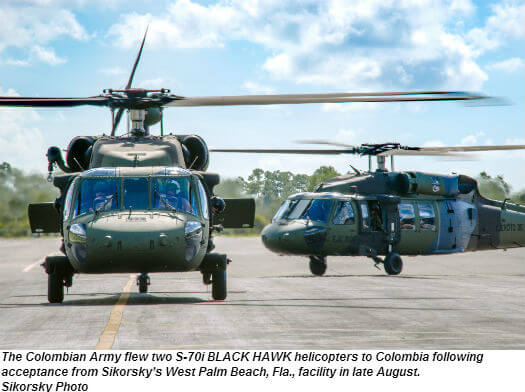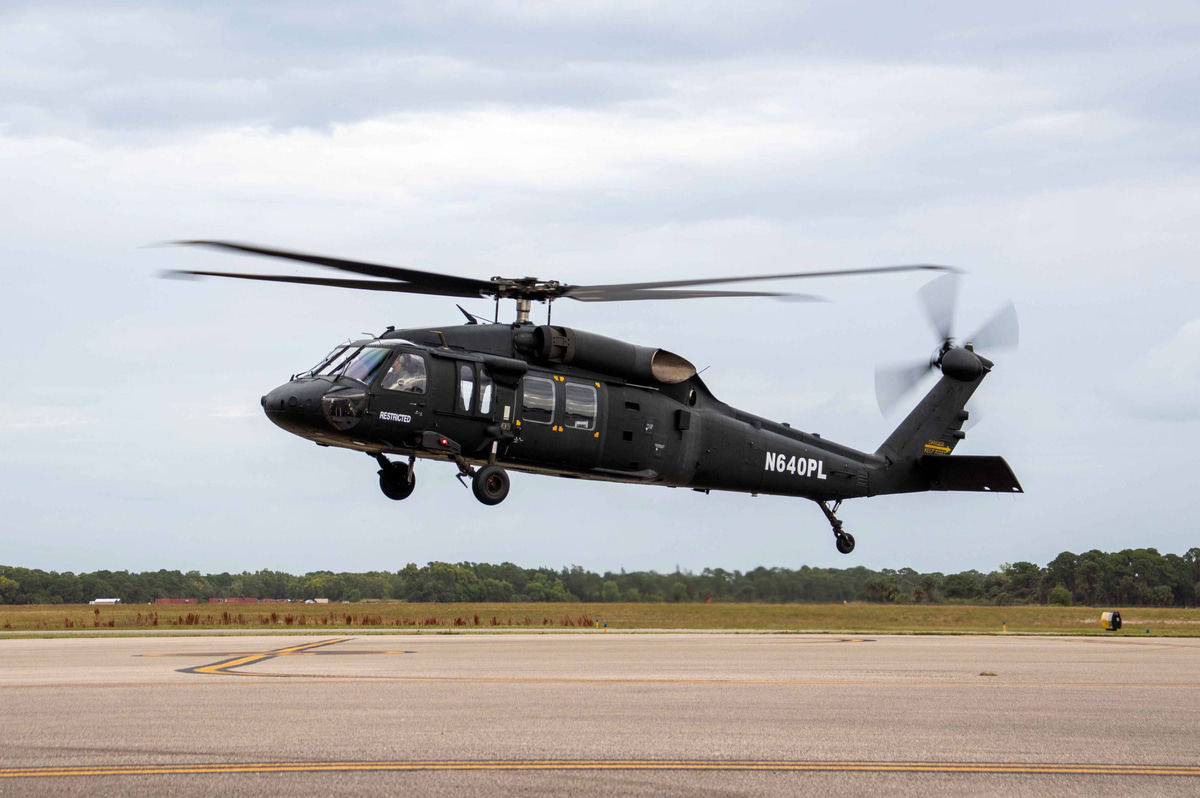How the Sikorsky S 70 Sticks Out in the Helicopter Industry
How the Sikorsky S 70 Sticks Out in the Helicopter Industry
Blog Article
High-Performance Multi-Role Rotorcraft Featuring Advanced Cockpit Technologies and Integrated Sensing Unit Equipments
The realm of rotorcraft technology has actually seen significant improvements in current times, particularly in the realm of high-performance multi-role rotorcraft equipped with cutting-edge cabin technologies and effortlessly incorporated sensing unit systems. These advancements have not just enhanced the operational capabilities of rotorcraft however have likewise dramatically impacted contemporary aviation procedures on various fronts. From enhanced objective flexibility to boosted operational efficiency, the convergence of innovative cockpit modern technologies and incorporated sensor systems has introduced a new period of possibilities for rotorcraft applications. In the complying with discussion, we will certainly discover the development of rotorcraft modern technology, explore the realm of advanced cockpit innovations, and take a look at the ramifications of incorporated sensor systems on the functional convenience and efficiency of modern-day rotorcraft.
Development of Rotorcraft Technology
The advancement of rotorcraft innovation has been noted by significant developments in aerodynamics, materials, and propulsion systems, shaping the capacities and performance of modern-day rotorcraft. Wind resistant renovations have actually improved the performance and ability to move of rotorcraft, enabling enhanced speed, dexterity, and stability during trip (sikorsky s 70). Developments in products, such as making use of composite materials and progressed alloys, have actually caused lighter yet more powerful rotorcraft frameworks, improving overall efficiency and longevity. Furthermore, developments in propulsion systems, including extra effective engines and cutting-edge propulsion modern technologies, have made it possible for rotorcraft to accomplish higher elevations, faster rates, and better payloads.
These advancements have not just changed the capabilities of rotorcraft however have also increased their applications throughout numerous industries, consisting of military, business, and emergency situation solutions. The constant evolution of rotorcraft modern technology proceeds to drive innovation in the field, pressing the limits of what is feasible and shaping the future of upright trip.
Advanced Cockpit Innovations
Building upon the foundational advancements in aerodynamics, products, and propulsion systems, the realm of rotorcraft innovation currently changes emphasis in the direction of introducing Advanced Cabin Innovations. The combination of sophisticated innovations within the cabin environment plays a critical role in enhancing the functional capabilities, safety and security, and effectiveness of contemporary rotorcraft. sikorsky s 70. Advanced Cabin Innovations encompass a vast selection of functions made to give pilots with improved situational understanding, structured information administration, and user-friendly control user interfaces
One of the essential innovations in cabin style is the application of glass cabins, which replace conventional analog determines with high-resolution screens. These electronic systems supply personalized formats, real-time information assimilation, and boosted readability, allowing pilots to gain access to crucial details at a glimpse. Moreover, progressed avionics systems, such as fly-by-wire controls and increased truth displays, are transforming just how pilots engage with the aircraft, permitting for specific control and boosted decision-making abilities.


Including innovative cabin technologies not only improves pilot efficiency yet also adds to general goal effectiveness and safety in intricate operational environments. By leveraging modern modern technologies within the cockpit, rotorcraft manufacturers are establishing new requirements for functional quality and objective success.
Integrated Sensing Unit Equipments
With the evolution of rotorcraft innovation, the integration of advanced Integrated Sensor Solution has actually come to be extremely important in improving operational efficiency and security. These Integrated Sensing unit Equipments incorporate a large selection of modern technologies that offer crucial information for various functions such as navigation, security, targeting, and ecological monitoring. By effortlessly incorporating sensing units like radars, cams, lidar, and infrared systems into rotorcraft, operators can profit from enhanced situational awareness, boosted goal capacities, and lowered pilot workload.
One key benefit of Integrated Sensor Equipments is their capability to gather real-time data and offer workable understandings to pilots and mission operators. For instance, progressed radar systems can discover and track targets over fars away, permitting very early hazard detection and reliable response preparation. Additionally, integrating infrared and electro-optical video cameras allows rotorcraft to perform reconnaissance and security objectives with precision and accuracy.
Fundamentally, the assimilation of cutting-edge sensing unit modern technologies right into rotorcraft not just boosts operational efficiency however likewise contributes dramatically to general mission success and crew safety. As rotorcraft remain to develop, the role of Integrated Sensor Solution will unquestionably stay at the leading edge of technology in the aerospace sector.
Operational Adaptability and Performance
Enhancing functional flexibility and efficiency in rotorcraft is a natural development from the integration of sophisticated Integrated Sensing unit Equipments. By leveraging the understandings and information provided by these advanced sensing unit systems, rotorcraft can maximize their efficiency throughout various objectives and environments.
Operational versatility encompasses the capacity of rotorcraft to adapt to different roles and scenarios efficiently. With sophisticated cabin innovations and integrated sensor systems, rotorcraft can flawlessly change in between jobs such as search and rescue, medical emptying, security, and more. This convenience enhances the rotorcraft's ability to meet diverse operational needs without requiring comprehensive reconfiguration.
Performance in rotorcraft operations is crucial for optimizing mission effectiveness and resource usage. Integrated sensing unit systems play a crucial function in enhancing functional efficiency by providing real-time data on weather, terrain mapping, target monitoring, and much more. This data enables pilots to make enlightened decisions quickly, enhance flight courses, save fuel, and boost overall mission efficiency.
Effect On Modern Aviation Procedures

In addition, the assimilation of advanced sensors assists in improved goal preparation and implementation, allowing rotorcraft to execute a vast array of tasks with improved accuracy. From search and rescue operations to aerial firefighting and police objectives, the capabilities of modern rotorcraft geared up with innovative cockpit modern technologies and incorporated sensor systems are unparalleled.
Furthermore, the impact of these developments prolongs past functional get more effectiveness to cost-effectiveness and sustainability. By enhancing flight paths, gas usage, and maintenance timetables, high-performance rotorcraft furnished with innovative cockpit innovations and sensors contribute to decreasing operational prices and see environmental effect, making them important possessions in modern aeronautics procedures.
Final Thought
In final thought, the high-performance multi-role rotorcraft with innovative cabin modern technologies and incorporated sensing unit systems stands for a considerable development in aeronautics innovation. These advancements boost functional convenience and effectiveness, inevitably impacting modern aviation operations in a positive method. The combination of these sophisticated technologies enables improved capabilities and performance in different mission circumstances, showcasing the proceeded innovation of rotorcraft modern technology in the aeronautics sector.
The world of rotorcraft modern technology has seen remarkable improvements in recent times, specifically in the realm of high-performance multi-role rotorcraft outfitted with advanced cockpit innovations and seamlessly incorporated sensor systems. From improved mission convenience to boosted operational effectiveness, the convergence of sophisticated cabin modern technologies and integrated sensing unit systems has ushered in a new period of opportunities for rotorcraft applications. In the complying with discussion, we will explore the evolution of rotorcraft innovation, delve into the realm of advanced cabin innovations, and analyze the implications of integrated sensor systems on the operational convenience and performance of modern-day rotorcraft.

Report this page